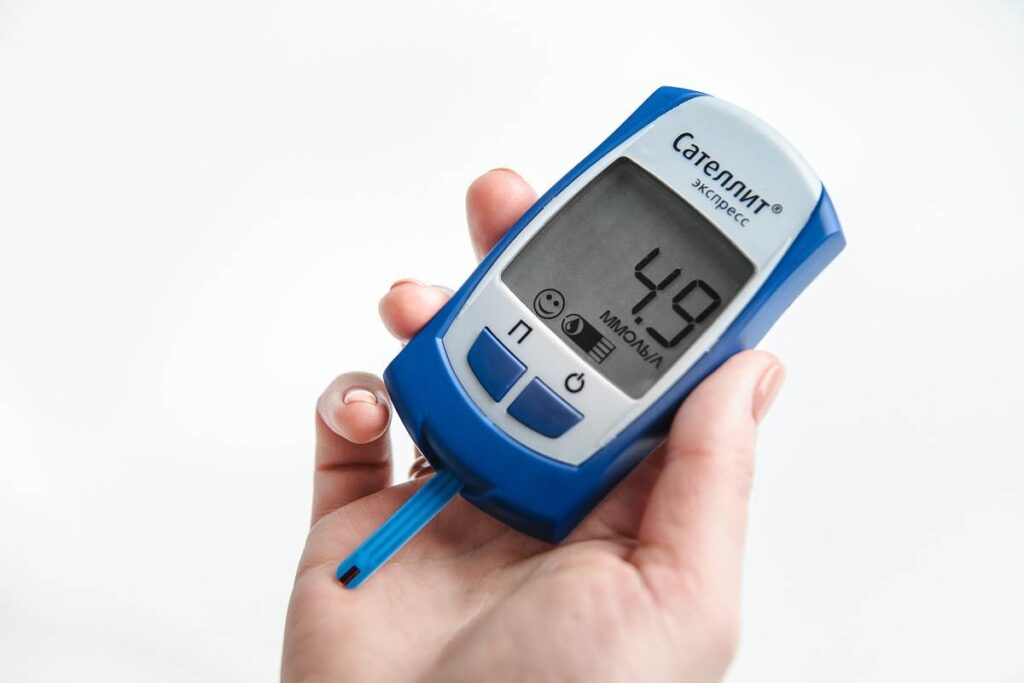For many years, type 5 diabetes was described in the medical literature as malnutrition-related and was recognized in some regions; however, there was no formal classification. This changed recently when the International Diabetes Federation (IDF) officially re-listed the condition as type 5 diabetes, bringing renewed attention to a form of diabetes that often develops gradually, especially in low- and middle-income countries. With the official recognition of the condition, there is a growing need to better understand it for effective prevention and treatment. This blog looks at key aspects of type 5 diabetes, including its symptoms, risk factors, and prevention strategies. Let’s start with understanding the condition.
What Is Type 5 Diabetes?
Type 5 diabetes is a form of diabetes that results from chronic malnutrition, especially in people who are underweight or who were malnourished as children. The condition is produced by the body’s inability to create or use insulin effectively due to nutrient deficiencies. It has some similarities with other forms of diabetes, but its main difference is that it is directly related to poor diet, rather than just genetic or lifestyle factors. Type 5 diabetes tends to develop gradually and is common in areas with limited access to nutritious food, predominantly in low- and middle-income countries.
What Causes Type 5 Diabetes?
Type 5 diabetes develops primarily due to long-term malnutrition, especially during the early years of growth and development. When the body is chronically deficient in essential nutrients, such as protein, iron, and specific vitamins, it can affect the systemic operation of the pancreas. Over time, this can decrease insulin production and affect the body’s ability to control blood glucose levels.
This form of diabetes is not associated with excess weight or autoimmune disorders, but rather with a history of malnutrition. The condition is most common in thin people, often with a low body mass index (BMI), who may have had delayed physical development or frequent infections as a result of poor nutrition in childhood. Environmental and social factors contribute to poverty, limited access to health care, and poor diets. These conditions often persist for generations, increasing the risk of diseases associated with malnutrition, such as type 5 diabetes.
Common Symptoms of Type 5 Diabetes
The symptoms of Type 5 diabetes often develop steadily and may go unnoticed in the early stages. Because it typically affects individuals who are already undernourished, some signs can be mistaken for general weakness or poor health.
Common symptoms include:
- Unexplained weight loss – due to reduced insulin production and poor nutrient absorption
- Constant fatigue, as the body struggles to use glucose for energy
- Frequent urination – a typical response to high blood sugar levels
- Increased thirst, triggered by fluid loss through excessive urination
- Slow-healing wounds are linked to poor circulation and low immune function
- Blurred vision – caused by fluctuations in blood glucose levels
- Recurring infections, such as skin, gum, or urinary tract infections, due to lowered immunity
Additional signs may include delayed growth or puberty in children or young adults. Since the condition often progresses silently, paying attention to subtle symptoms is essential, especially in those with a history of poor nutrition.
Risk Factors to Watch Out For
Type 5 diabetes is closely linked to long-term nutritional and environmental issues. Understanding the key risk factors can help identify those most vulnerable to disease development.
- Chronic malnutrition: A history of malnutrition, especially in early childhood, can affect the development and function of the pancreas, eventually leading to decreased insulin production.
- Low body weight or BMI: People with persistently low body weight may have inadequate fat and muscle stores, affecting how their body processes and stores glucose.
- Failure to thrive: Poor nutrition during growth can lead to failure to thrive or below-average height, both common in people at risk.
- Lack of dietary variety: A diet low in protein, essential vitamins (such as B vitamins, then vitamin A), and minerals (such as selenium and iron) contributes to poor metabolism and may increase the risk of diabetes.
- Frequent childhood infections: Recurring illnesses such as diarrhoea, respiratory diseases, or parasites can overwhelm the body and exacerbate nutrient deficiencies, further affecting glucose metabolism.
- Poverty and food insecurity: Lack of financial resources often leads to irregular meals, poor diet quality, and limited access to health care, factors that can contribute to both malnutrition and late diagnosis.
- Living in low- and middle-income areas: Type 5 diabetes is more common in areas where malnutrition remains a widespread problem. The disease can go undetected in many of these areas for years due to low awareness and limited diagnostic tools.
How Is Type 5 Diabetes Treated?
Treatment of type 5 diabetes involves more than just controlling blood sugar levels; special attention is paid to eliminating the consequences of chronic malnutrition. Here are the main aspects of treatment:
Nutritional Rehabilitation
The first step is to improve a person’s diet. This includes foods rich in energy, protein, and essential vitamins and minerals. Meals should be frequent and balanced, using affordable and locally available ingredients to promote healthy weight gain and metabolism.
Blood Sugar Monitoring and Medication
Some people may require low insulin or oral medications to treat diabetes. Because people who are malnourished are more prone to hypoglycemia (low blood sugar), careful monitoring is needed to prevent complications.
Regular Medical Follow-ups
Regular check-ups help track your progress with nutrition, blood sugar levels, and overall recovery. Doctors can adjust treatment plans based on improvements in weight, appetite, and energy levels.
Treatment of Associated Conditions
People with type 5 diabetes often have other problems, such as anaemia, chronic infections, or vitamin deficiencies. Addressing these issues, along with diabetes management, is vital for overall recovery and a better response to treatment.
How Can You Prevent Type 5 Diabetes or Its Progression?
Preventing Type 5 diabetes—or slowing its effects—often starts with addressing the root causes of malnutrition and improving awareness in at-risk communities. Here are some essential steps:
- Prioritize a balanced and nutritious diet: Encourage meals with enough calories, protein, and essential vitamins and minerals. Even small changes, like adding pulses, leafy greens, dairy, or fortified foods, can make a difference, especially in areas where resources are limit.
- Improve nutrition in early childhood: Good nutrition from pregnancy through early childhood plays a key role in preventing long-term complications. Mothers and caregivers should be made aware of the importance of nutrition during the first 1,000 days of a child’s life.
- Identify and treat infections early: Repeated infections can worsen poor nutrition and stress the immune system. Access to basic healthcare and timely treatment is essential, especially in remote or underserved regions.
- Monitor growth in undernourished children: Routine tracking of height, weight, and overall development helps catch early signs of nutritional deficiency and metabolic problems, giving a chance for early action.
- Raise awareness through schools and community groups: Educating children, parents, teachers, and health workers about the signs of malnutrition and diabetes can lead to faster recognition and timely care. Awareness campaigns can also help reduce stigma.
Consult Today
Living with type 5 diabetes or being at risk for it can be a confusing experience, especially as the condition is poorly understood. Getting the proper medical support can make all the difference. At Max Hospital, our endocrinologists can help you understand the condition, advise on appropriate treatment options, and support you in long-term management. We recommend seeing a specialist if you are concerned about your symptoms or risk factors. Book an appointment with an endocrinologist at Max Hospital and take the first step towards restored health and well-being.
Frequently Asked Questions
Can children or teenagers get Type 5 diabetes?
Yes, especially in those who suffered from prolonged malnutrition as children. The condition usually begins in puberty or early adulthood, but the nutritional deficiencies that cause it often become apparent much earlier. In many cases, symptoms may be subtle and progress slowly over time.
How do doctors diagnose Type 5 diabetes?
There is currently no exact test for type 5 diabetes. Diagnosis typically involves a combination of blood glucose testing, nutritional history, signs of previous malnutrition (such as low muscle mass or growth failure), and ruling out other common forms of diabetes. A thorough clinical assessment is necessary.
Is insulin always required for treatment?
Not always. Some people may need insulin, especially if their pancreas is severely damaged. Others can control the disease with oral medications and a diet that meets their nutritional needs. Treatment decisions depend on your health, blood sugar levels, and how your body responds to foods and drugs.
Can Type 5 diabetes lead to long-term complications?
Yes, if the disease is not managed correctly, it can lead to problems similar to those of other types of diabetes. These can include nerve damage, kidney problems, vision problems, and poor wound healing. Early diagnosis and regular monitoring can help reduce the risk of these consequences.
Is it possible to reverse Type 5 diabetes?
The condition may not be completely reversible, but can be well manage properly. Improving nutrition, controlling blood sugar levels, and addressing any underlying health issues can help a person live a healthy life and prevent the condition from worsening.
Is there a genetic link to Type 5 diabetes?
Unlike type 2 diabetes, which is often inherit, type 5 diabetes is more closely linked to chronic malnutrition than to genetics, and a family’s access to food, health care, and living conditions can sometimes affect more than one generation.
What role does diet play in managing this condition?
A balanced, nutrient-rich diet is critical to treating type 5 diabetes. Unlike typical diabetes diets, which focus solely on blood sugar control, type 5 diabetes nutrition aims to restore lost muscle mass, correct deficiencies, and support overall recovery from malnutrition.


